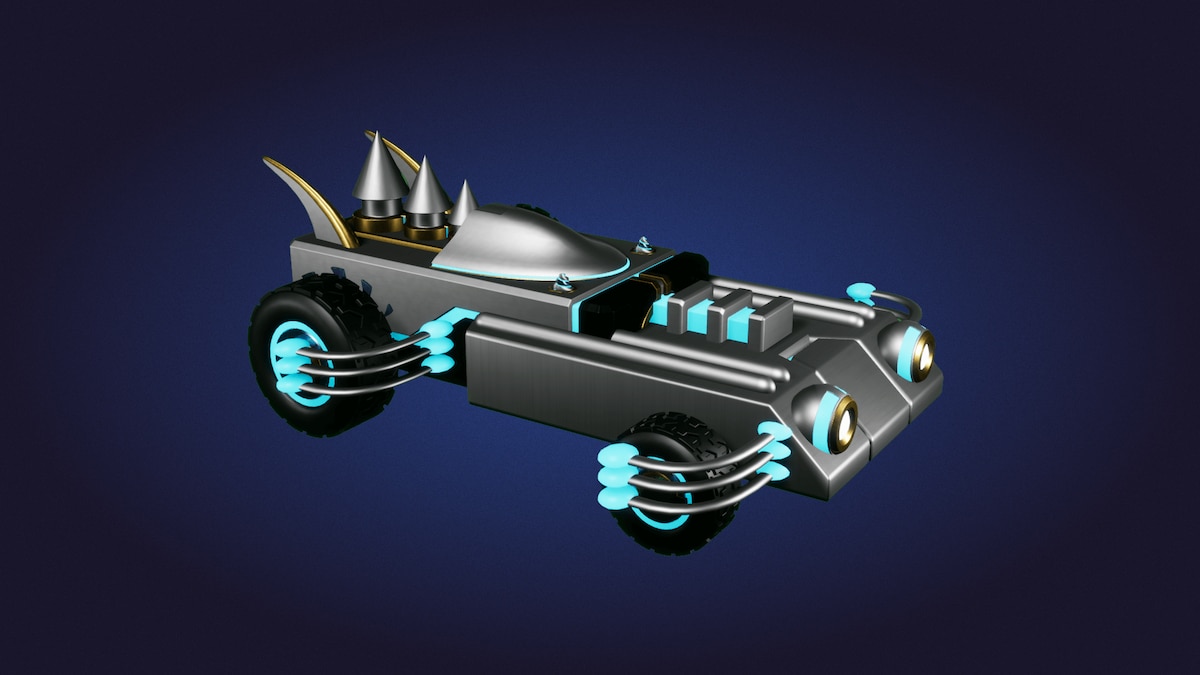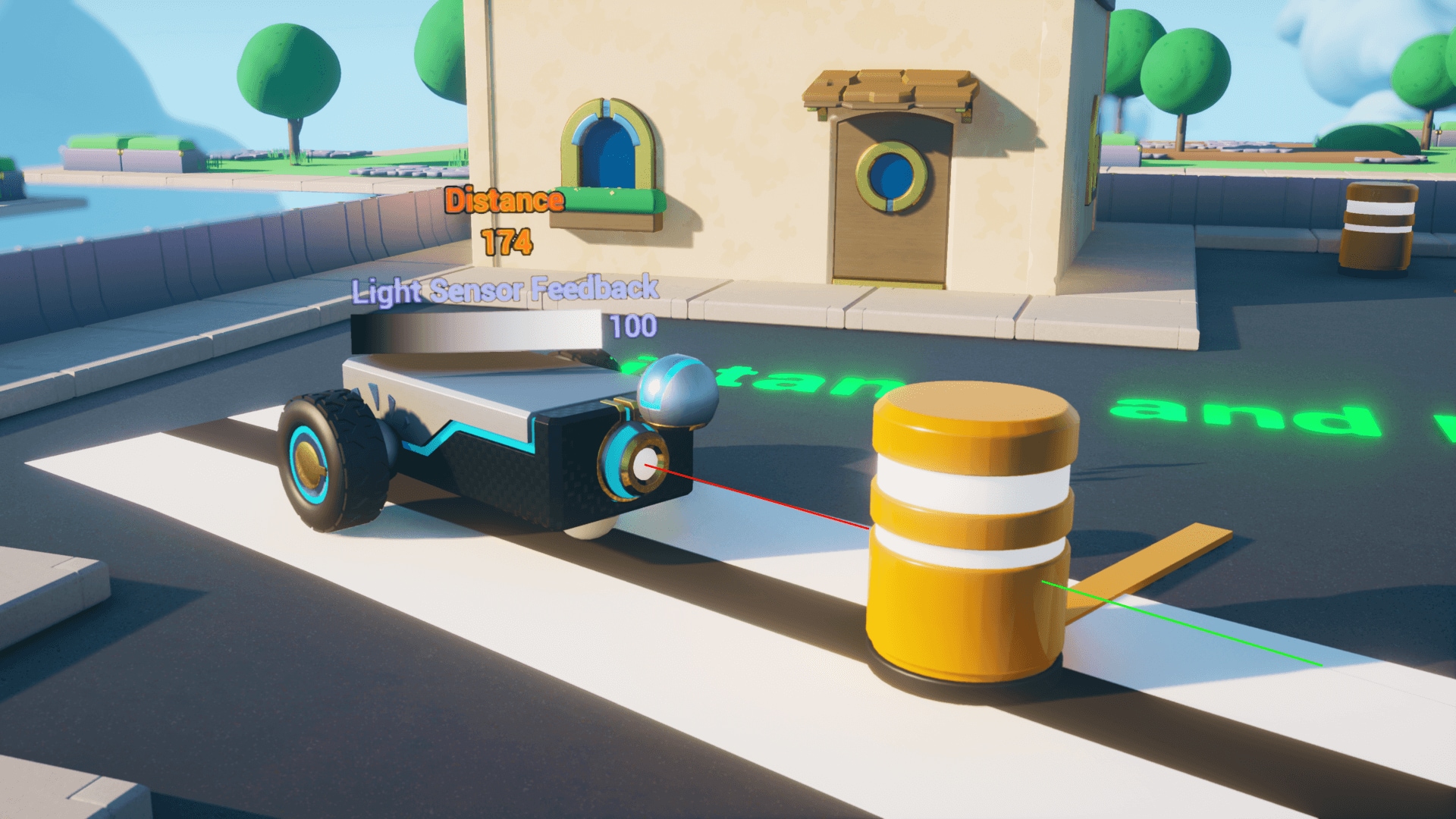
Learn the art of virtual robotics with our new Unreal Learning Kit update
April 28, 2022
Who doesn’t love robots? They cook and clean, they walk the dog, they fall in love, they could destroy civilization…
Robots also open up a wealth of learning possibilities for students—applied physics, engineering, coding. But physical systems can also be a headache for teachers, as they are both costly and difficult to maintain.
So let’s fix that.
With the introduction of our new robotics learning path, the entire process can now be done in a virtual space, using the same tools developers used to make popular games like Fortnite.
This kit is an update to our Hour of Code-inspired Unreal Learning Kit, which debuted with everything a teacher needs—lesson plans, guides, etc.—to build game development training into their curriculum. This time, they get the same resources with sumo matches and autonomous decision training thrown in for good measure.
“Robotics is an excellent platform for teaching students to code because they can actually see their coding in action. An obedient robot that performs exactly as instructed provides learners with humorous mishaps and well-earned victories, which is immensely engaging,” said Brian Dickman, President at Cleverlike Studios. “Plus, by working with real physics and common instructional designs, students get an excellent foundation in the field that they can apply to physical systems down the road.”
Robots also open up a wealth of learning possibilities for students—applied physics, engineering, coding. But physical systems can also be a headache for teachers, as they are both costly and difficult to maintain.
So let’s fix that.
With the introduction of our new robotics learning path, the entire process can now be done in a virtual space, using the same tools developers used to make popular games like Fortnite.
This kit is an update to our Hour of Code-inspired Unreal Learning Kit, which debuted with everything a teacher needs—lesson plans, guides, etc.—to build game development training into their curriculum. This time, they get the same resources with sumo matches and autonomous decision training thrown in for good measure.
“Robotics is an excellent platform for teaching students to code because they can actually see their coding in action. An obedient robot that performs exactly as instructed provides learners with humorous mishaps and well-earned victories, which is immensely engaging,” said Brian Dickman, President at Cleverlike Studios. “Plus, by working with real physics and common instructional designs, students get an excellent foundation in the field that they can apply to physical systems down the road.”


As part of a new learning path, we are introducing “Let’s Train Virtual Robots,” five distinct lessons that teachers can start working through today using Unreal Engine. To complete these activities, you can download the new teacher and student assets from the Unreal Marketplace.
The lessons include:
Robot Vehicles
In this activity, students will learn how to code a two-wheeled robot to navigate around specific targets without tipping over. To do this, we’ll explore the engineering and physics principles of a well-designed robot, including how its weight, wheel location, and a gliding ball produce stable results.
Students will construct program commands, test their robot, and then return to their coding to adjust any instruction setting that didn’t accomplish their goal using one of Unreal Engine’s most powerful tools, the Blueprint Visual Scripting system.
Our sandbox for this lesson will be a sumo-bot challenge. The goal of sumo is to stay in the circle, as you push your opponent out of it. But our robots can’t win, unless they can see where the boundary lines are. In this lesson, students will teach them where they can (and can’t) go, so they always remain victorious.
Sumo Robots
Learn why robots need sensors, how to use one to receive information, and how robots can make decisions based on that information.Our sandbox for this lesson will be a sumo-bot challenge. The goal of sumo is to stay in the circle, as you push your opponent out of it. But our robots can’t win, unless they can see where the boundary lines are. In this lesson, students will teach them where they can (and can’t) go, so they always remain victorious.

Self-Driving Car
What happens when things veer off the road? Nothing good.This time, we’ll teach the robots how to turn away from a guiding line and then find it again through the use of loop and conditional statements. By the end, your robot will clearly know the difference between light and dark, as we prepare it for more autonomous decisions.

Collision-Avoidance Robot
In this activity, students will learn how to use a distance sensor to detect objects in the path of our robot. The robot will be programmed to follow a line, just like in lesson three. But this activity will upgrade our robot to stop if an object gets in its path. Will it deliver a pizza without dropping it? That’s up to you.
Remote-Controlled Soccer Bots
Next, we move from autonomous robots to user intervention, as we program our robots to do exactly what we want. By adding a remote-control receiver to the robot, it can be coded to respond to any keyboard or controller input.What type of robots are remotely controlled? Bomb squad robots, drones, rescue robots, and lots of different types of recreational robots.
But ours shall play soccer! GOOOOAAALLLLLLL!

Download the robotics learning path
We have lesson plans and student guides ready to go for anyone that wants to expose their students to the wonders of robotics. No parts required.





